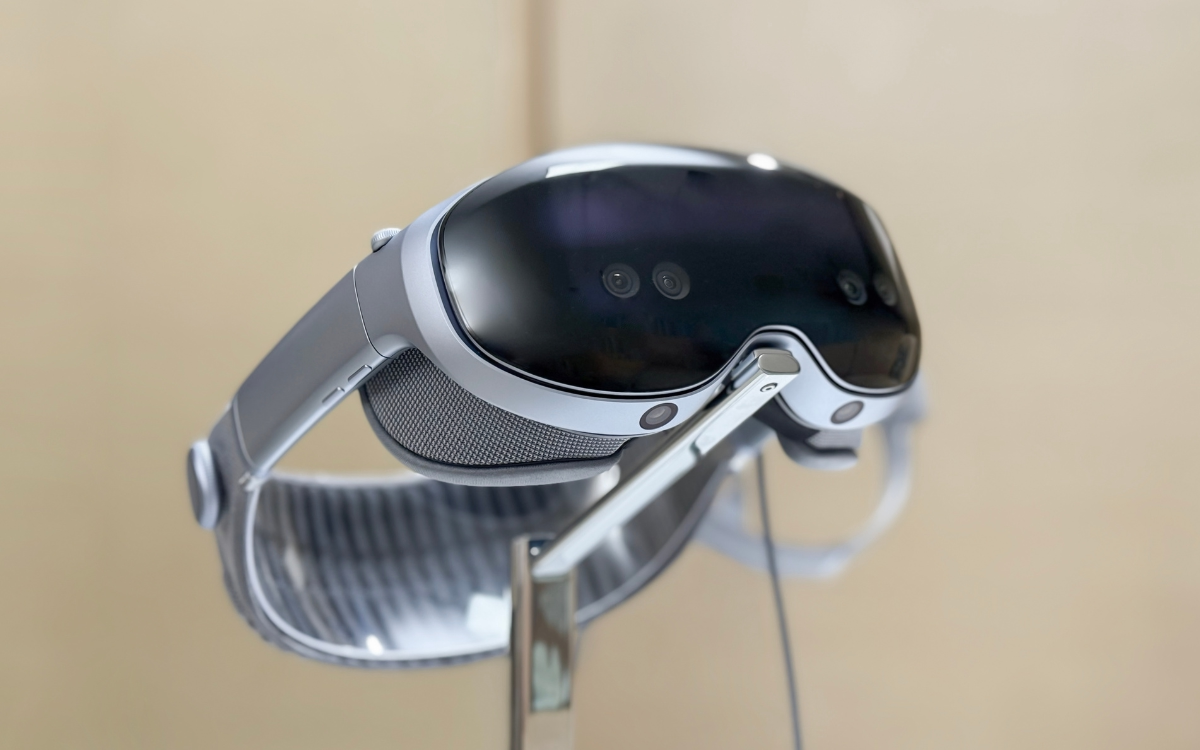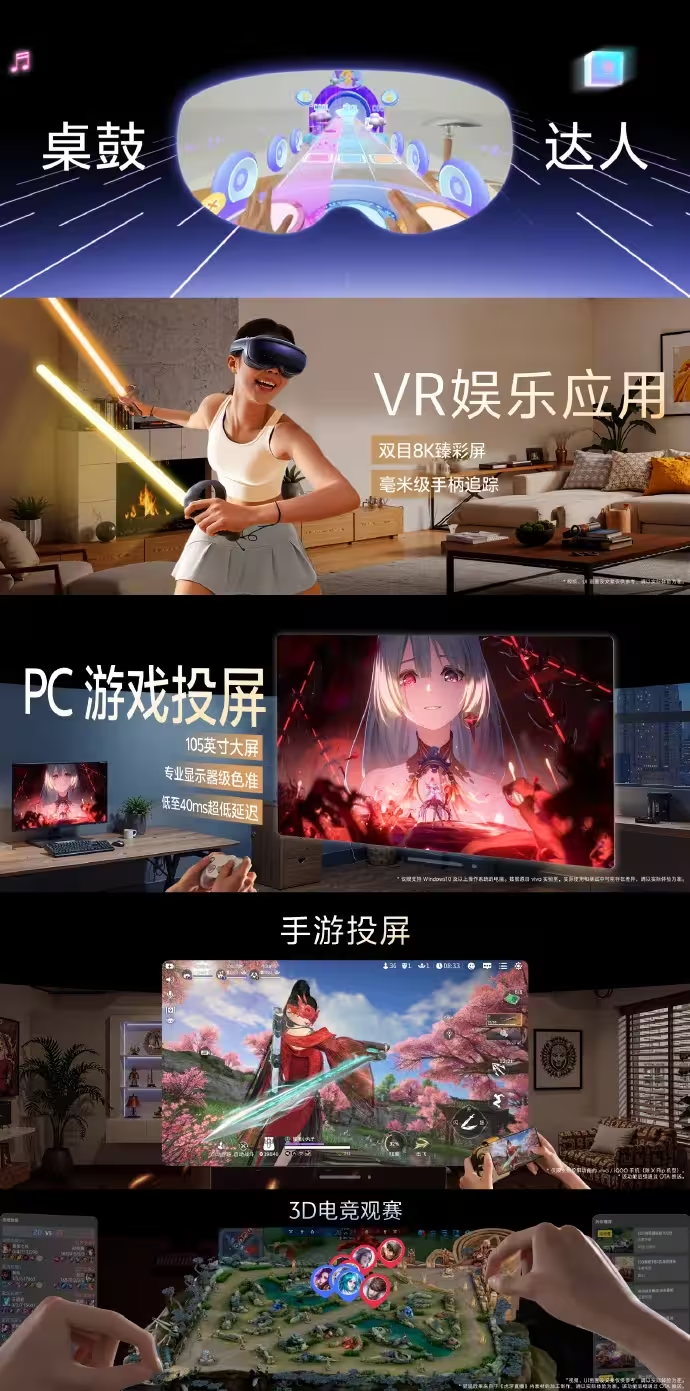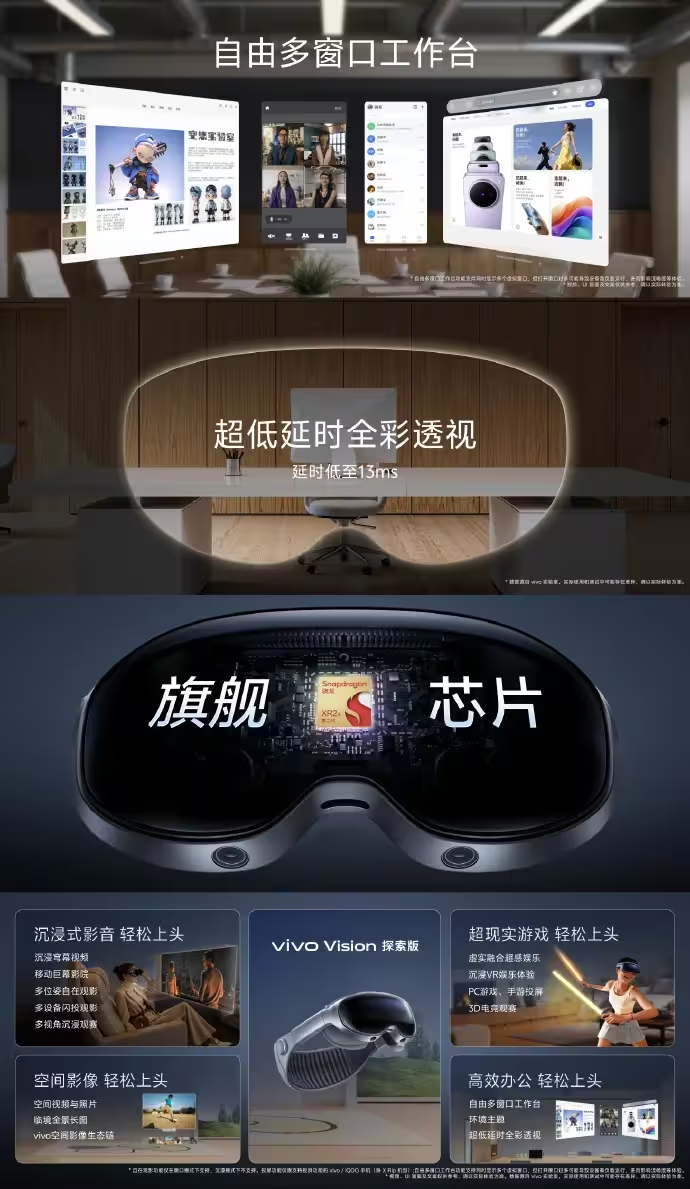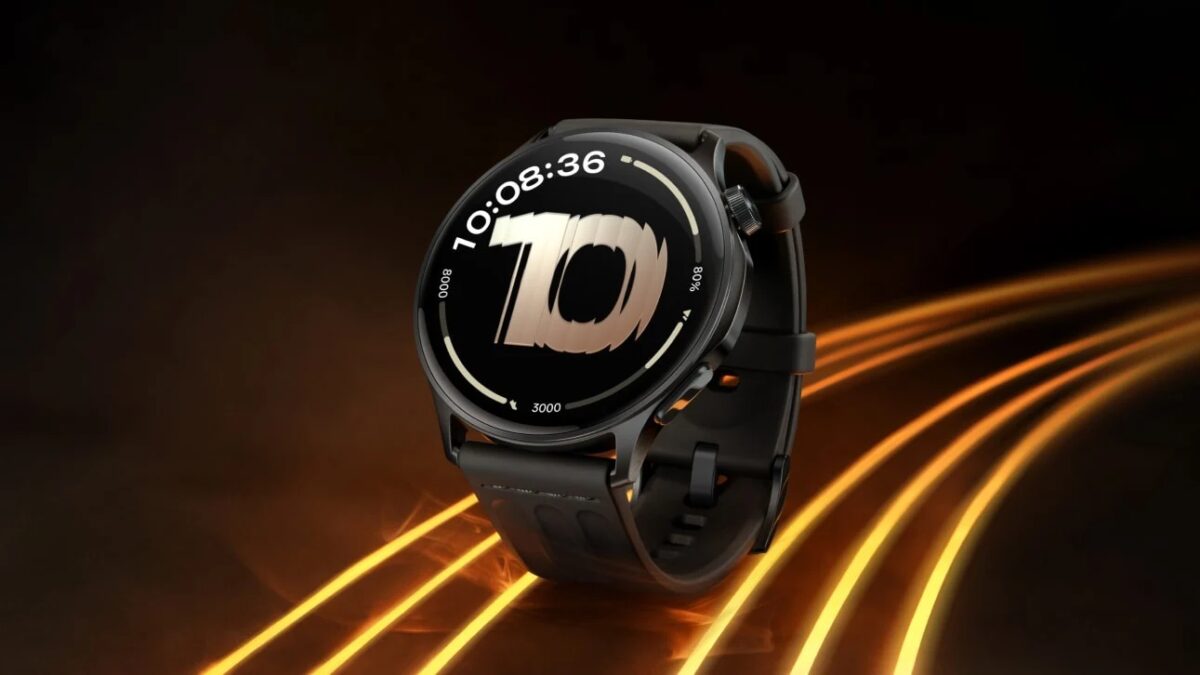Vivo has unveiled its first mixed reality headset

Vivo has officially debuted its first mixed reality headset, revealing the Vision Explorer Edition headset. The company has taken the unusual route of letting users test the device in demo zones before putting it on sale.
The main feature is that it weighs just 398g. By comparison, the Apple Vision Pro weighs more than 600g. That’s thanks to a split-body design and the use of magnesium alloy, which makes the helmet both lightweight and strong.
The dimensions are also quite compact at 83mm tall and 40mm thick. For convenience, there are interchangeable face masks, a variety of padded pads, and a quick-adjust dual-ring fastener.
Based on two 8K Micro-OLED displays with 3840 × 3552 pixels per eye, 94% DCI-P3 coverage and high color accuracy. It is individually calibrated at the factory so that the image for both eyes matches in brightness and color. Magnetic corrective lenses with diopters from 100 to 1000 are available for spectacle wearers.


The Qualcomm Snapdragon XR2+ chip is responsible for performance, which Vivo claims is 2.5 times faster than the previous generation. On top of that, the company has developed the OriginOS Vision interface, which offers a movie theater mode, spatial sports replays, and multitasking work windows.
The passthrough feature has a minimal latency of 13ms and provides a realistic transition between virtual and real environments. Interaction is powered by 1.5° eye tracking and gesture recognition with a range of 26 degrees of freedom and 175° vertically.
Activities are supported by eye tracking with 1.5° accuracy and gesture recognition with a range of 26 degrees of freedom and 175° vertically.
Content is prepared, too: exclusive Drum Master and Little V’s Journey projects, a partnership with Migu for sports broadcasts, and support for wireless streaming from Vivo and iQOO PCs and smartphones. There’s a spatial photo feature, too.
Sales haven’t started yet. Starting August 22, Vivo will open demo zones in 12 branded stores in major Chinese cities including Beijing and Shenzhen.
Price hasn’t been officially named, but company executives have hinted at a range of around 10,000 yuan (roughly $1395) or lower. According to Vivo’s COO, smartphones in China became mainstream when their cost approached the price of base models, and the company expects to repeat that scenario with the MR headset.
Vivo’s strategy is built on ease, comfort and affordability instead of maximizing features. The success of the approach will become clear as users begin to test the device.








